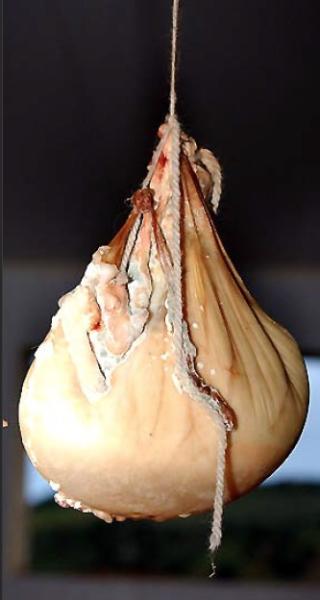- Read offline
- Access all content
- Build a list of your own favourites
- Search the contents with full-text search functionality
- ... and more!
caglio
rennet
A ruminant's fourth stomach compartment is the abomasum, abomaso in Italian, also known as the rennet-bag, or reed tripe. Young animals use it to digest their mother's milk.
Classic cheese-making uses the lining of the abomasum to get the enzyme-rich rennet or caglio that turns liquid milk into curds (cagliata) and whey, although increasingly the rennet used in cheese is from lab-created rennet, taking the DNA from animal rennet but growing it in yeast and is considered by many vegetarian friendly.
Some traditional soft cheeses such as casoperuto also use plant-based rennet, especially from cardoon thistle, artichoke, and other plants which yield a thickening enzyme after being soaked in water. It is less reliable than animal rennet and can effect the taste.

Su Caggittu de Crabittu, or Callu de Cabrettu or Caglio di Capretto made in Sardinia, is a strong pungently gamey cheese made in the stomach of a milk-fed kid; after the animal is slaughtered, the stomach is emptied and refilled with milk, then tied up and hung from a string in a cool airy place as the cheese is formed in for 15-20 days, and then it is smoked.
It may well be the oldest cheese in the world.
Images by Kleinriverblog, Sardegna Agricoltura

